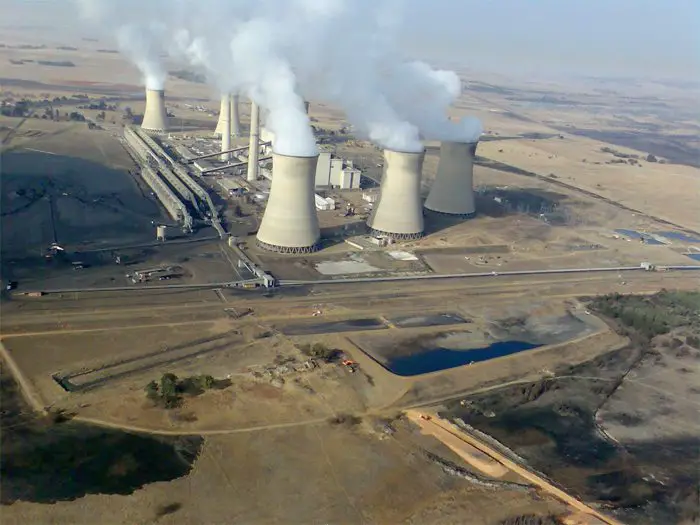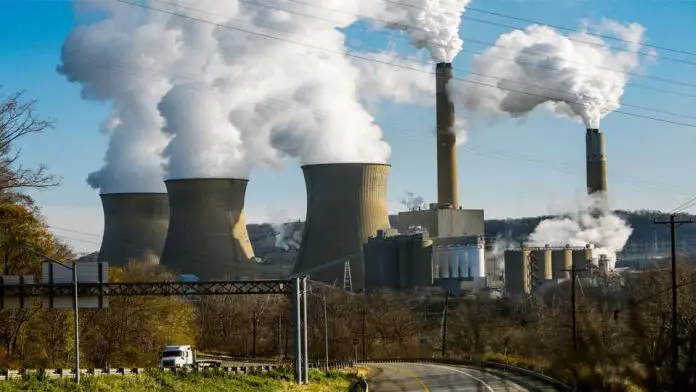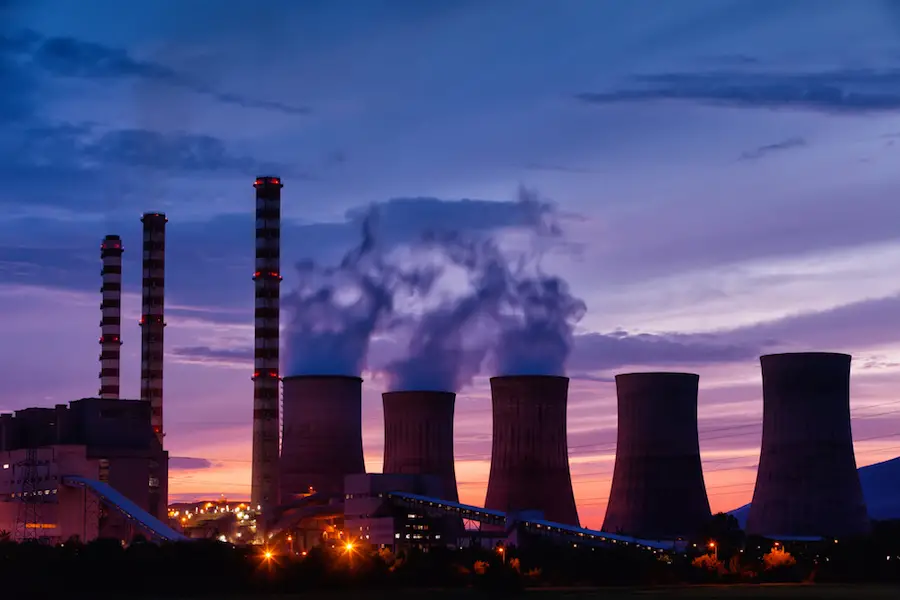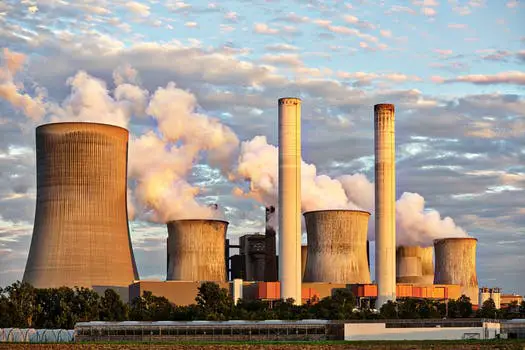In 2022, Centum Investments Company Ltd. wrote off its $16.39 million investment in the disputed Lamu coal power plant. A lack of funding and environmental concerns prevented the project from taking off.
In the 2019–2020 financial year, the investment’s carrying value was zero, raising concerns about its possibilities for recovery.
Read also:US $3bn coal power plant to be constructed in Zimbabwe
The need to be prudent about the investment, according to chief executive James Mworia, informed the strategic decision.
In addition to the impairment loss on its investment in the 140 MW Akiira Geothermal Power Project in Kenya’s Nakuru County, the investment firm also saw a write-off of Ksh900 million ($7.37 million).
For a 37.5 percent stake, Centum invested $16.14 million in Akiira Power in 2016, but as of September 30, 2022, the carrying value of the investment had dropped to $8.77 billion.
Centum invested Ksh2 billion ($16.39 million) for a 50% shareholding in Amu Power, a joint venture between Gulf Power (the developer and co-sponsor) and Centum in the same year (2016).
Nevertheless, the project experienced a series of hurdles, including the cancellation of an environmental license, a delay in securing funding from banks, and General Electric’s announcement that it was leaving the coal business.
Centum and Gulf Energy Ltd established Amu Power Company as a special purpose entity to bring together a consortium of financiers and technical partners to complete the $2 billion project, which has since stalled.
The Industrial and Commercial Bank of China (ICBC), which had agreed to fund an estimated 60 percent ($1.2 billion) of the project’s cost of construction, lost interest in the plant in 2020.
The facility was anticipated to add 1,050 MW of electricity to the national grid once it was completed.
Reported on September 3, 2014
Two Kenyan firms win US$2bn Lamu coal plant project bid
 Two local firms, Gulf Energy Limited, and Centum Investment Company Limited, have successfully won the bid for the construction of the Lamu coal plant.
Two local firms, Gulf Energy Limited, and Centum Investment Company Limited, have successfully won the bid for the construction of the Lamu coal plant.
The power plant is going to be constructed at a cost of US$2bn in Mombasa, Kenya. US$500m to be used in construction will be provided by equity fund, and the balance will be funded through debt. Once complete, the plant is expected to add up to 960MW of electricity to Kenya’s national grid.
The move for undertaking the Lamu coal plant project is directed at reducing the country’s reliance on diesel-generated electricity, which has in the past elevated the cost of electricity.
This will be the largest single power-generating plant in East, Central, and Southern Africa, with the exception of the South Africa case. Gulf Energy and Centum consortium won the bid for the Lamu coal plant project against 26 other bidders who were contesting for the contract.
The award for the tenders to two Kenyan firms is a bold move for the country, as it seeks to create jobs for its citizens. Successful completion of the project would mean that local firms can do just a better job than big multinationals if given the chance.
Among other bidders in the Lamu coal plant project was Shanghai Electric Company. Others were Avic International, Cistenique, and HCIG Energy Investments Company, which had planned to work with Liketh Investments Company, Gulf, and Centum consortium.
The finalist bidders underwent a rigorous technical and financial evaluation by an independent Technical Evaluation Committee. The coal plant project is part of the government’s target to generate 5000MW of electricity in the country by 2017.
Reported on March 2, 2015
Construction of a US$ 2bn coal power plant in Lamu, Kenya to commence in October
Construction of a multimillion coal power plant in Lamu, Kenya is set to commence in October this year, Amu Power Company has confirmed.
Amu Power, a company formed by a consortium of Centum and Gulf Energy, expressed their gratitude to the Kenyan Government for awarding them the tender and further said that at least 870 acres of land are needed for the development of the 981.5 Megawatts coal project.
Gulf Energy Managing Director, Francis Njogu said they are currently waiting to be issued with the land where the construction will take place and they are anticipating that the land acquisition process will be completed before October this year.
The new coal power plant, which will be set up in the Manda area in Lamu County, will be the biggest private sector-led infrastructure project in East and Central Africa, and after construction, begins it will initiate operations within 21 months.
The development includes the building of a power plant, a jetty, and a housing complex that will house 300 workers. The company will build, own and operate the plant for 25 years.
The project will lead to employment creation and will also support the development of heavy industries including motor vehicle assembly, steel, and iron smelting, and food processing among others.
The coal power plant will rely on coal imports from South Africa at the rate of US$50 a tonne until coal production from Mui Basin in Kitui county starts.
The proposed 960MW Lamu coal-fired power plant is part of the government’s plans to generate 1,920MW of electricity from coal by December 2017 as part of the 5,000-plus MW plan.
Reported on October 19, 2015
Plans to construct major coal power plant in Kenya faces fresh hurdle
The construction of a major coal power plant in Kenya by Amu Power now faces a fresh hurdle after locals protested a raw deal in order to vacate their farms. The US$2b coal-fired power plant construction project is affecting more than 200 farmers.
The farmers are now accusing the County government of Lamu and Amu Power which is the firm spearheading the construction of the power project of plotting to underpay them.
Speaking to the media the more than 200 farmers affected by the project revealed that they are aware of secret meetings being made by Amu Power and the county government of Lamu without the knowledge of the land owners.
The farmers now say that they will not settle for anything less than Sh5m per acre as earlier agreed with the power firm. A resident of Kwasasi where the project will be constructed told the media, “We will not accept anything less than earlier agreed. We have resorted to protest if the power firm offers an alternative compensation.”
Construction of the power plant in Lamu was set to start on September 30 and end in June 2017 but it has been marred with delays. Early this year environment watchdog National Environment Management Authority (NEMA) was seeking to establish if the project had any environmental repercussions.
Then came delays in compensating those to be displaced by the electricity project. Amu Power is a consortium consisting of Gulf energy and Centum investment companies. The coal power plant in Kenya is to be constructed on more than 870 acres of land in Kwasaasi, Hindi division and it is hoped that when completed it will generate over 980MW of electricity.
Reported on Oct 29, 2015
Amu Power confirms construction of coal-fired power plant in Kenya
A consortium that is tasked with the construction of a coal-fired power plant in Kenya Amu power, has confirmed that the building of the plant in Lamu will commence next year in January.
Amu Power is a company formed by a consortium of Centum and Gulf Energy. The community liaison officer for Amu power Aboud Sheikhalifa confirmed the reports and said that all plans are set and ready for construction to begin.
“The construction is slated to begin on January 15, 2016, and all the plans are in place to make sure that everything goes on as scheduled,” said Mr. Sheikhalifa.
The coal-fired power plant in Kenya projected to cost US$ 1.7bn will be constructed in the Kwasasi area in Lamu County and is anticipated to produce a third of Kenya’s electricity.
The power plant is also expected to produce 1,050MW of electricity and it will be the biggest single producer of electricity in Kenya.
“The country is currently producing about 2, 200MW of electricity, the coal-fired power plant will produce half of that and the energy will be used to drive the economy,” said Sheikhalifa.
Currently, a Resettlement Action Plan (RAP) for the residents of Kwasasi where the project will be built is underway.
Amu power, the company that was selected to carry out the project entered into a Public Private Partnership (PPP) with the government where it will implement the project for 25 years until they recover its investment after which the project will revert to the government.
Reported on March 2, 2017
Construction of the coal-fired Amu Power plant in Kenya now gets the green light
Construction of the coal-fired Amu Power plant in Kenya has received the much-needed impetus after Kenya’s energy industry regulator ruled against environmentalists’ objection to Amu Power Company’s planned 1 000 MW coal-fired power plant in the nation’s coastal region.
Amu Power, backed by a conglomerate that includes Centum Investments and a group of Chinese companies, was primarily anticipated to start construction of the plant in Lamu in December 2015.
Nevertheless, the environmental group Save Lamu Natural Justice raised alarm about the effect the plant would have on marine life in the region, prompting the Energy Regulatory Commission to postpone issuing Amu Power an electricity generation license for the project.
The Energy Regulatory Commission said in a legal notice seen by Reuters on Tuesday that it had reviewed the views of the group and other involved parties and was content that all environmental concerns would be tackled sufficiently.
It also said that landowners who would be moved to make way for the plant did not go up against the plant’s construction and that the government was tackling their compensation.
“Taking the above reasons into account, the Commission barred the objection,” the Energy Regulatory Commission’s legal notice said.
Construction of the plant is anticipated to take 30 months once it begins. The project is part of a plan established in 2013 to add 5 000 MW of power to Kenya’s installed electricity generating capacity by this year.
The capacity stands at 2 341 MW at present. The Amu Power conglomerate also includes Kenya’s Gulf Energy and Chinese trio China Huadian Corporation Power Operation Company, Sichuan Electric Power Design and Consulting Company, and Sichuan No. 3 Power Construction Company.
Amu Power plant in Kenya was initially set to kick off in 2015 but has been hit by delays.
Reported on May 22, 2017
Construction of Kenya’s first coal power station to commence
Lamu coal Power Station, Kenya’s proposed coal-fired thermal power station, is set to begin construction following a $1.9 billion signed agreement between China Power Global and Amu Power.
The Energy Cabinet Secretary Charles Keter confirmed the same and went further to describe the plant as among the biggest plans under the public-private partnership framework. He also expressed confidence in the project, optimistic that it will be up and running by 2019.
According to him, the agreement is the near conclusion as the companies have already initialized the PPA. What’s more, the government is currently working on a letter of support in which the standards have been detailed, as well as the companies’ comments.
The letter will go through the Treasury and Attorney General as the LAPSSET lease, Eastern Africa’s largest infrastructure project bringing together Kenya, Ethiopia, and South Sudan is already signed.
Mr. Keter said that if all goes according to plan the ground-breaking will take place between June and July this year. The project, which is expected to infuse 1,050 MW into the power grid has already commenced the transmission line; the 400kV line from Lamu to Kitui to Nairobi, to which three contractors have been awarded.
The project will come on board to relieve Masinga which was closed down last week as a result of the unfavorable weather condition. Kenya will also have an alternative power source. Moreover, the power generated will be considerably cheaper as compared to hydropower.
The coal plant is set to be developed on 865 acres of land and feature a 210-meter tall smoke stack, which would become East Africa’s tallest structure. The project has been subjected to delays as the construction was expected to begin in September 2015 and last approximately 21 months.
Reported on August 31, 2017
AfDB seeks to fund the construction of a coal power plant in Kenya
The African Development Bank (AfDB) intends to fund the construction of a coal power plant in Kenya. They are however awaiting the environmental and social audits before releasing the funds.
AfDB Director-General of the East Africa Regional office Gabriel Negatu confirmed the reports and said that they are in talks with investors to fund the mega construction.
“The owners of the 1000 MW Lamu coal plant have approached AfDB for funding of US$100m. Also, they seek guarantees of a similar amount for the construction of the power plant,” Negatu said.
However, AfDB typically provides funding for between 10 and 20 percent of a project.
The Lamu coal plant
A consortium called Amu Power will develop the Lamu coal plant. It includes Centum Investments, Gulf Energy, Sichuan Electric Power and Design and Consulting, China Huadian Corporation Power Operation Company, and Sichuan No.3 Power Construction Company.
China Power Global is the firm set to construct the US$ 2bn power plant; this is according to Amu Power which did the commissioning.
The coal power plant is a low-cost energy source especially given Kenya’s tremendous coal resource. In addition, the power plant will use the latest technology to ensure that its impact on the environment is minimal.
The project finance is part of the pan African bank’s New Deal on Energy where it has set aside US$ 10bn to enable Africa to achieve universal electricity access by 2025.
Construction period
Construction of the plant will take approximately 30 months to complete once it begins.
The project is part of a plan established in 2013 to add 5 000 MW of power to Kenya’s installed electricity generating capacity by this year. The capacity stands at 2,341 MW at present.
Reported on June 14, 2018
Kenya loses out on US $2bn Lamu coal plant deal
Kenyan banks have lost out on the lucrative financing deal for the US $2bn Lamu coal plant project due to a lack of depth from the local lenders to finance mega projects over a long period.
According to Amu Power Company, the consortium that won the tender to construct the plant, the project will instead be financed through debt which accounts for three quarters, US $1.5bn per quarter, along with shareholders’ equity of US $500m.
“The local market does not have the depth of quantum and the tenor. We need 15-year money or more. The local commercial banks would struggle to do 15-year money,” said Amu Power CEO Francis Njogu.
Regulation limits
Central Bank of Kenya regulations limit the value of loans that banks can lend to a single individual based on their capital strength. The Kenyan energy sector regulator has however announced plans to start denominating tariffs for power projects in shillings, which is expected to raise project financing by local banks.
The project developers received a US $1.2 bn finance package from the Industrial Commercial Bank of China in February 2015 and said it was looking for more debt funding. The African Development Bank, AFDB is also expected to provide a partial risk guarantee for the coal plant, the first in the region.
“We will be looking at environmental and human concerns surrounding the project before we make our commitment to it,” said Gabriel Negatu, the AfDB regional director-general.
LAPPSSET
The coal plant is part of the planned Lamu Port South Sudan-Ethiopia Transport (Lapsset) corridor and is set to place Kenya among African nations that use coal energy such as South Africa.
Its electricity will be priced in the same range as geothermal power at 7.52 US cents per unit, almost a third of what diesel-fired plants charge on average. Construction has, however, suffered delays since 2015.
The Energy ministry reckons that the coal plant would help diversify Kenya’s power mix and drive growth. At 1,050 MW, the proposed coal plant is equivalent to 44 % of Kenya’s current installed capacity of 2,400MW.
Reported on Jun 2019
Kenya to build a coal-fired power plant in Lamu
 Kenya is set to move ahead with plans to construct a coal-fired power plant on its mainland opposite the tourist island of Lamu despite concerns raised about the project’s viability.
Kenya is set to move ahead with plans to construct a coal-fired power plant on its mainland opposite the tourist island of Lamu despite concerns raised about the project’s viability.
The construction of the plant, by Amu Power, a consortium comprising Kenya’s Gulf Energy and Centum Investment and a group of Chinese companies, after winning the government contract, was to commence in 2015 but has repeatedly been halted due to opposition by environmentalists.
Lamu coal-fired power plant
The plan is located near Lamu island, a famous ancient Swahili settlement and UNESCO World Heritage site and a top tourist destination. Environmentalists say the plant will pollute the air, destroying mangroves and breeding grounds for five endangered species of marine turtles, fish, and other marine life.
The US $2bn 1000MW coal-fired plant, scheduled to enter commercial service in 2024, would cost consumers more than US $9bn and at the same time lead to excess generating capacity in Kenya hence sharply increasing electricity rates for consumers.
According to a report dubbed ‘The Proposed Lamu Coal Plant: The Wrong Choice for Kenya’, reveals that even if the plant never generates any power Kenya will still have to pay for it.
“The true costs of Lamu’s electricity during the years 2024 through 2037 could average as high as US $22 to US $75 cents per KWh — three to 10 times the company’s 2014 projection,” the study noted.
The study said the plant’s proponents had underpriced coal imports and rising operational and maintenance costs. However, the plant’s backers say it would help tackle Kenya’s frequent blackouts by increasing generation capacity by nearly a third and generating power that would cost about half what consumers currently pay.
Amu Power says electricity from the plant will cost US $7.2 cents per KWh. In 2018, a Kenyan court suspended the project, sending the dispute back to an environmental tribunal. It is expected to issue a decision later this month on whether the project can go ahead.
Reported on August 15, 2021
AfDB decides not to fund Kenya’s coal-fired power plant project
 The African Development Bank (AfDB) has announced that it will not fund a coal-fired power plant project in Kenya and has no plans to finance new coal plants in the future.
The African Development Bank (AfDB) has announced that it will not fund a coal-fired power plant project in Kenya and has no plans to finance new coal plants in the future.
The Abidjan-based lender had earlier published an environmental and social impact assessment for the Lamu project, which was planned near a Unesco World Heritage Site but was halted by a local environmental tribunal.
The 1,050MW coal plant
The project which was originally planned to start in 2015 was backed by Kenyan and Chinese investors. However, dozens of top banks, insurers, and development finance institutions are restricting coal investments, as climate activists and investors voice growing concerns about the impact of burning fossil fuels, particularly coal.
The AfDB has been a major funder of coal projects in Africa. In the past decade, it has lent more than US $1.6bn to South African utility Eskom for its Medupi coal plant and more than US $55m for the Sendou coal plant in Senegal.
Environmental concerns
AfDB president Akinwumi Adesina said that the bank took environmental concerns seriously and was focusing on renewable energy, adding that coal-fired power plant projects risked becoming “stranded assets” on the AfDB’s balance sheet.
Wale Shonibare, AfDB’s acting vice president for energy, added that the bank did not move forward with the Lamu Coal transaction and had no plans to do so in the future.
The AfDB president had told UN climate talks in September that the bank was “getting out of coal” but he did not give a timeframe or specify whether the Lamu project would be affected. The AfDB’s retreat from coal will make it harder for the Lamu project to progress.
However, it still plans to finance flue gas desulphurization units at Medupi to mitigate sulfur emissions produced by burning coal.
Reported on August 15, 2021
Construction of Kenya’s first-ever coal-powered plant in Lamu halted

Construction of Kenya’s first-ever coal-powered plant has been halted following a court rule that said the National Environment Management Authority (NEMA) failed to do a thorough environmental assessment after allegations that the plant would have dire economic and health effects on locals.
The construction of the plant, by Amu Power, a consortium comprising Kenya’s Gulf Energy and Centum Investment and a group of Chinese companies, after winning the government contract, was to commence in 2015 but has repeatedly been halted due to opposition by environmentalists.
In 2018, a Kenyan court suspended the project, sending the dispute back to an environmental tribunal.
Lamu coal-fired power plant
The plant is to be located near Lamu island, a famous ancient Swahili settlement and UNESCO World Heritage site and a top tourist destination. Environmentalists say the plant will pollute the air, destroying mangroves and breeding grounds for five endangered species of marine turtles, fish, and other marine life.
The US $2bn 1000MW coal-fired plant, scheduled to enter commercial service in 2024, would cost consumers more than US $9bn and at the same time lead to excess generating capacity in Kenya hence sharply increasing electricity rates for consumers.
According to a report dubbed ‘The Proposed Lamu Coal Plant: The Wrong Choice for Kenya’, reveals that even if the plant never generates any power Kenya will still have to pay for it.
“The true costs of Lamu’s electricity during the years 2024 through 2037 could average as high as US $22 to US $75 cents per KWh — three to 10 times the company’s 2014 projection,” the study noted. The study said the plant’s proponents had underpriced coal imports and rising operational and maintenance costs.
However, the plant’s backers say it would help tackle Kenya’s frequent blackouts by increasing generation capacity by nearly a third and generating power that would cost about half what consumers currently pay. Amu Power says electricity from the plant will cost US $7.2 cents per kWh.
